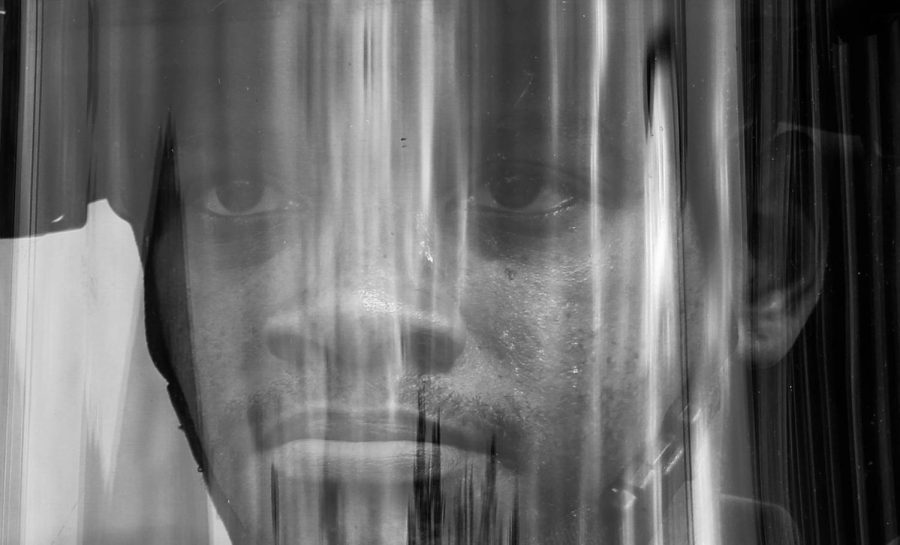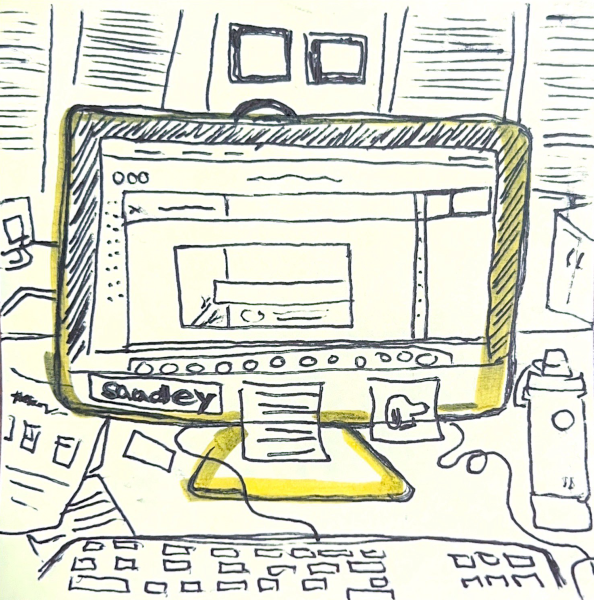Student’s photograph from protest gains attention of news outlets
June 29, 2020
A black and white closeup of a Black police officer stoically shedding tears at a protest in Cleveland gained the attention of local news outlets — and the photo was taken by a Kent State student.
Sylvia Lorson, a senior journalism major at Kent State, attended a May 30 protest in support of the Black Lives Matter movement in Cleveland where she captured the photo. Lorson, who is interested in going into photojournalism, saw the march as the perfect opportunity to document what was happening.
Lorson said the protest started peacefully, as everyone marched with signs and chanted.
“I didn’t see exactly what happened because we were way in the back because we got there late,” she said. “But, when we got on Ontario Street, which is the street that the justice building is on, we started seeing smoke and tear gas clouds, and people started running back and were telling us they were firing tear gas and we should turn around or just stay where we were. But me and my friend and a whole bunch of other people continued forward to the justice building to see what was up and help out however we could.”
After getting to the front of the march, Lorson said there was a moment when all of the white protesters got in front of the Black protesters, linking arms between them and the police, chanting:
“No justice. No peace. No racist police.”
In that moment, Lorson was face to face with an officer the protesters were trying to talk to, but he wasn’t responding.
“He was just staring straight ahead the entire time they were talking to him,” she said. “But I started to realize that his eyes were tearing up.”
A protester near Lorson asked the officer, “You agree with us, don’t you?”
The officer just closed his eyes and remained silent.
During this moment, Lorson had her camera out and was taking pictures of everything going on.
“We could tell that he was hurting,” she said. “When I got home and was editing the photos, I had taken a closeup shot of his face. And that was when I realized that he was crying, and I didn’t even realize it.”
Kevin Jones, the officer in Lorson’s photo, received a call explaining the protesters were destroying property, which is when he responded outside of the justice center.
Jones said it seemed as if the city was falling apart, but in the back of his mind, he understood what the protesters were about. He described being a Black officer as a double-edged sword, and that he has to maintain both sides.
“When I get out on the front lines with these people who are voicing their opinion, which they have every right to do so,” he said. “I think as a police officer you have a right to protect that right that people are voicing, whether it’s bad or good.”
When Lorson took the photo, Jones didn’t know what she was doing. He noticed she had a camera but didn’t realize she was taking a photo of him.
Following the protest, Jones said he was at work and his coworkers were scrolling through Instagram when they came across Lorson’s photo.
They found the photo and said, “Jones, that’s you.”
“Wait a minute, that’s not me,” he said.
Then they showed him the photo.
Jones reached out to Sylvia on Instagram and sent her a direct message letting her know he is the officer in the photo.
“I thanked her for capturing this moment,” he said. “This is what changing America is about. Capturing those moments that are so surreal and are happening right then, and not something made up when it actually happened at that moment in history, which is something she did.”
Since then, the photo gained the attention of news affiliates like WKYC and ABC News. WKYC ran a story about Lorson’s photo on June 3 and ABC News included it in their digital livestream on June 5. While Lorson is glad to see her photo getting so much exposure, she said the experience is weird.
“The person who took the photo of the Black protester in front of the Trump Tower in New York with his fist up wrote an article about it, and he said that photo was possible because somebody died,” she said. “And that’s how I feel about this photo, too. It wouldn’t have been taken if Black people weren’t being routinely killed by police. So it’s weird because I want to be proud of myself, but at the same time, that photo shouldn’t need to be a thing.”
Jones said being in the photo made him feel like this is what America is about.
“It’s about the pain, the protection, and it also shows the greatness that not every police officer is against the people—there are still people fighting for you and fighting for the rights of others,” he said. “They say a picture’s worth a thousand words. That is truly a picture that I will always hold dear to me for years to come, even when I’m old and grandchildren and children…It still brings me to tears when I actually see the photo myself. That was really me.”
As a journalist, Lorson said she thinks it’s part of her responsibility to capture these moments, including the raw emotions, for those who can’t make it to the protests so they can see what it’s really like.
Lorson said the recognition her photo received taught her that people will perceive her photos however they want to perceive them. When she took it, she did not realize Jones was crying, but she said some people who see the photo get angry because they think she is sympathizing with the police and pushing the narrative that not all police are bad.
“They just think that I am contributing to this police sympathizer narrative,” she said. “I didn’t intend that at all, but that’s just how it is. I’m going to take that with me moving forward for the rest of my life, that people are never going to understand what I intended when I took the photo, they’re just going to see it how they want to see it.”
Lorson said this situation with her photo is particularly difficult, because she said she believes Jones is one of the good cops in the narrative.
“It’s hard to tell the difference between the good cops and the bad cops,” she said. “I just don’t want [people] to get it twisted. I’m not sympathizing with cops. I just captured a moment and wanted to share it.”
Jones said being in Lorson’s photo reassured him about one of the reasons he is a policeman—to protect people’s right to exercise their First Amendment freedoms.
“Everyone has a right to protest. Everyone has a right to be heard,” he said. “I am not here to police people. I am here to serve the people.”
Contact Maria McGinnis at [email protected].





















